AWS Certified SysOps Administrator - Associate
Introduction Prerequisites
Demo SysOps Administrator Associates Exam Guide What to focus on
Welcome, future SysOps administrators! This guide, presented by Michael Forrester, offers a detailed overview of the AWS Certified SysOps Administrator – Associate (SOA-C02) exam. In the following sections, we break down exam topics, candidate expectations, and the skills required to succeed.
The exam guide is easily accessible—just search for "SOA-C02 exam guide" on Google to find the latest version.

Overview of Candidate Skills and Experience
The exam guide outlines the skills that AWS expects from candidates. It covers topics like instance remediation, disaster recovery (DR), business continuity, and architectural considerations including high availability. Ideal candidates typically have one to two years of system administration experience, specifically in deployment, management, networking, and security on AWS.
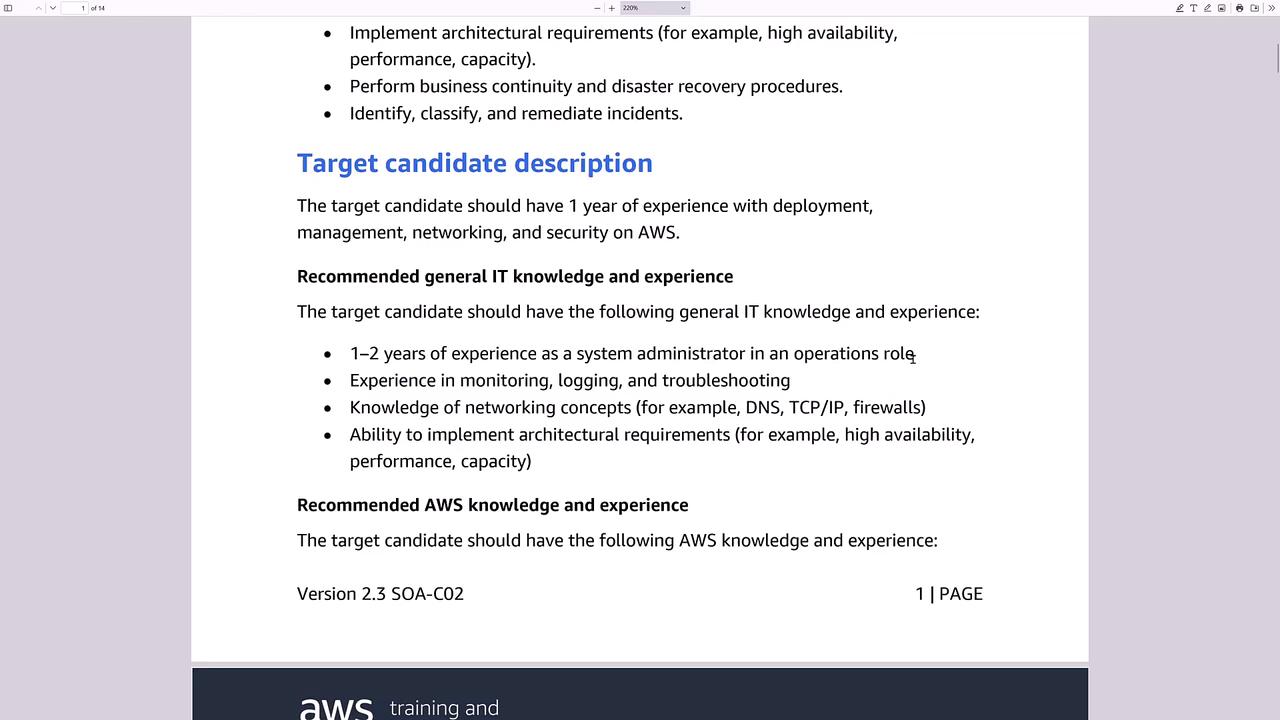
Candidates should also possess hands-on experience with monitoring, logging, and troubleshooting. A strong foundation in networking (DNS, TCP, IP, firewalls, subnetting, IPv4, and IPv6) is essential. Moreover, the ability to translate architectural requirements (for example, deploying two virtual machines behind a load balancer across two availability zones) into practical implementations is crucial. While architectural knowledge is beneficial, it is not a strict prerequisite for exam success.
Tip
For best results, complement your existing IT skills with at least one year of AWS-specific experience. Familiarize yourself with the AWS Well-Architected Framework, including reliability, security, cost optimization, performance efficiency, sustainability, and operational excellence.
Hands-on experience using both the AWS Management Console and the CLI, along with familiarity with network security services and compliance controls, is also very important. Note that the exam does not require you to design or develop complete solutions or to engage in detailed compliance and governance activities.
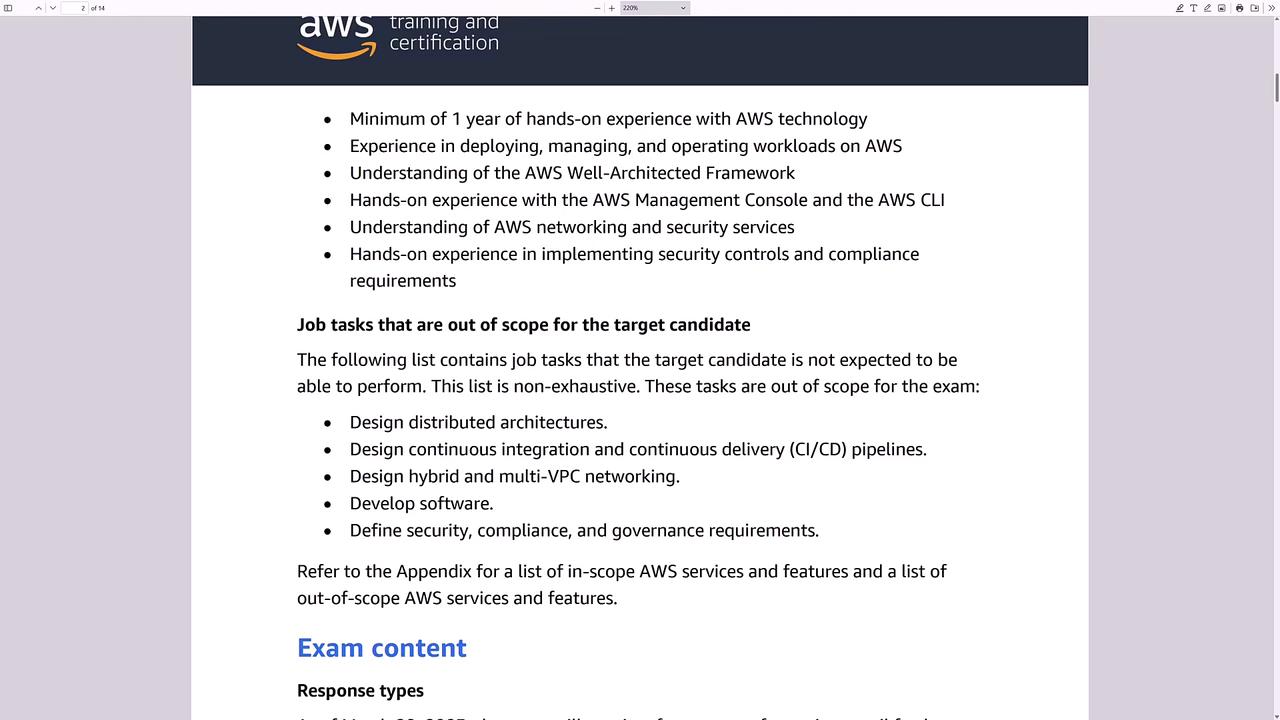
Exam Structure and Scoring
As of March 28, 2023, the exam features only multiple-choice and multiple-response questions—there is no lab component. It comprises 50 scored questions and 15 unscored questions. All questions appear identical to the candidate, so any unusual or off-topic questions are likely AWS testing items that do not affect your final score.
The scoring details are as follows:
- A minimum score of 720 out of 1000 points is required to pass.
- If there are 50 questions, correctly answering approximately 70% (around 35 questions) is typically sufficient. Keep in mind that the weight of each question may vary based on its complexity and the domain covered.
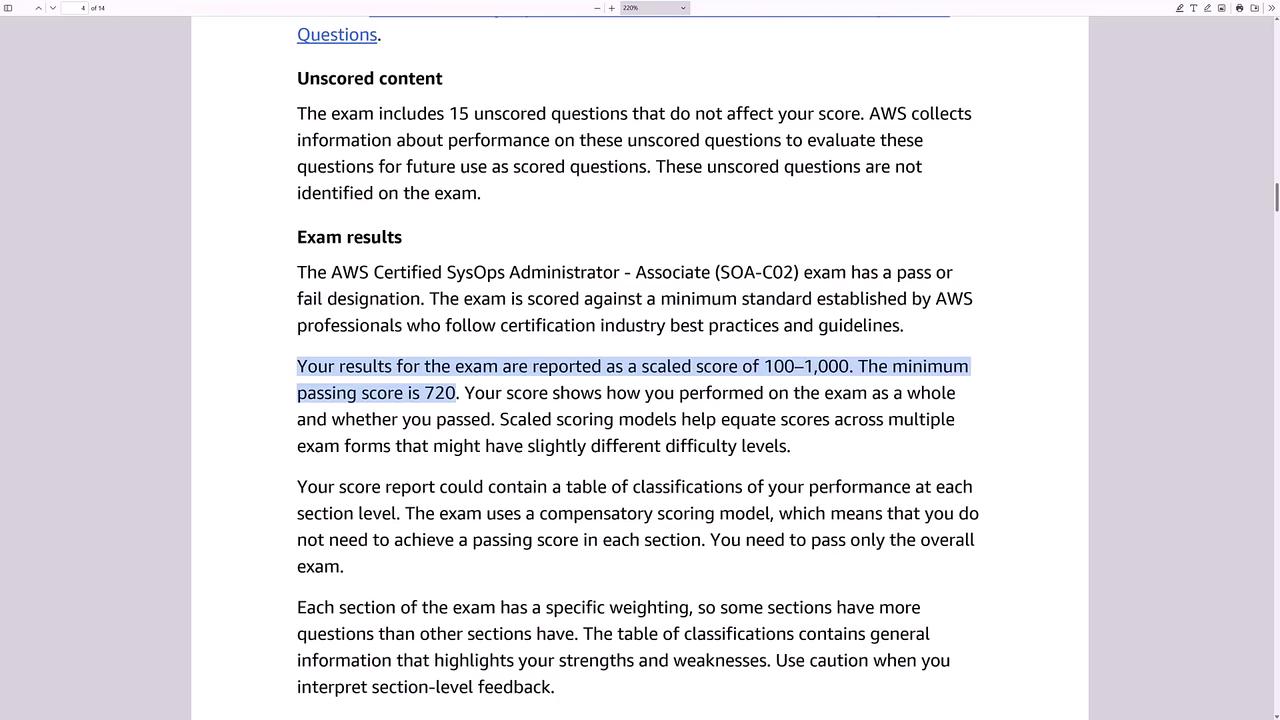
Breakdown of Exam Domains
The exam is divided into several key domains:
- Monitoring and Logging: Roughly one-fifth of the exam.
- Reliability and Business Continuity: About one-sixth.
- Deployment, Provisioning, and Automation: Almost one-fifth.
- Security and Compliance: Approximately one-sixth.
- Networking and Content Delivery: Nearly one-fifth.
- Cost and Performance Optimization: Around one-eighth, making it the smallest section but still important.
For instance, if you are not yet comfortable with topics like CloudWatch, CloudWatch Logs, or CloudWatch Logs Insights, make sure to note these areas for further study. Similarly, if Amazon EventBridge rules are new to you, add them to your list of priorities.
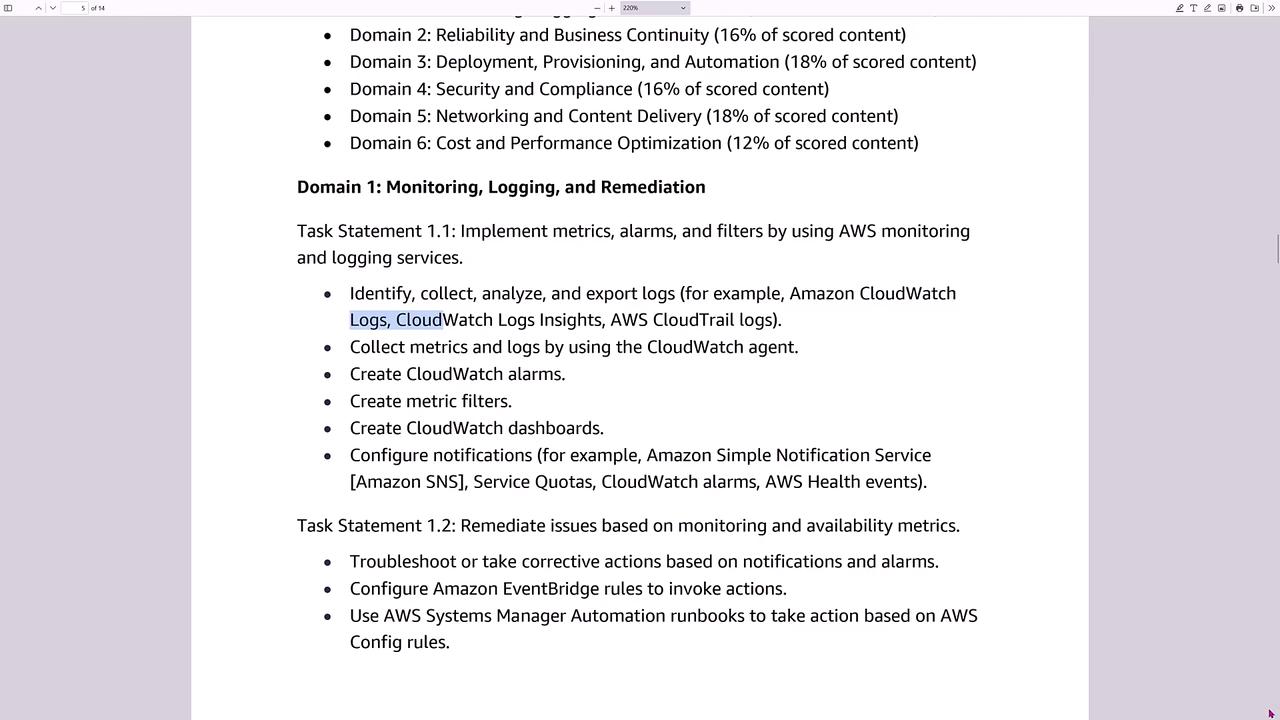
Key Areas of Focus
- Deployment, Provisioning, and Automation: The guide emphasizes tasks such as implementing alarms, filters, and remediating issues. Rather than memorizing each detail, focus on understanding the underlying concepts—like service quotas and Systems Manager.
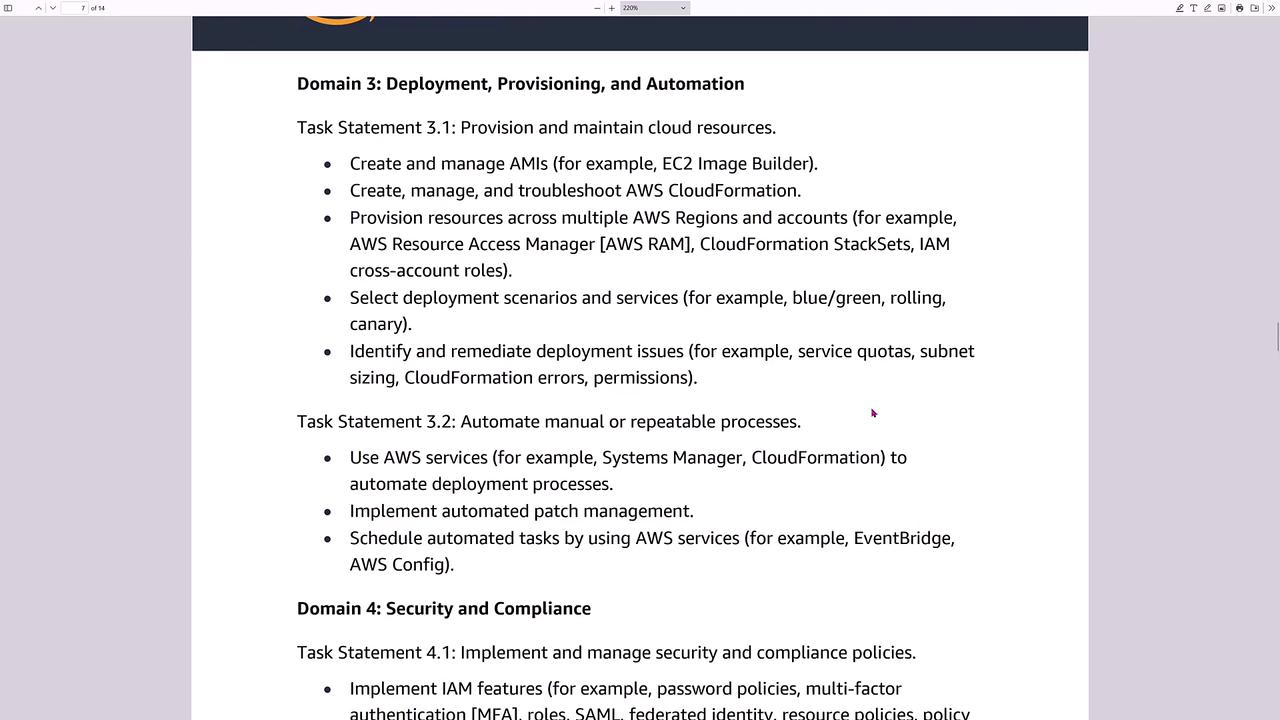
- Networking and Content Delivery: The guide covers topics such as configuring VPCs, Route 53, and network protection services. Although detailed memorization is not required, you should understand the core concepts and functions of these services.
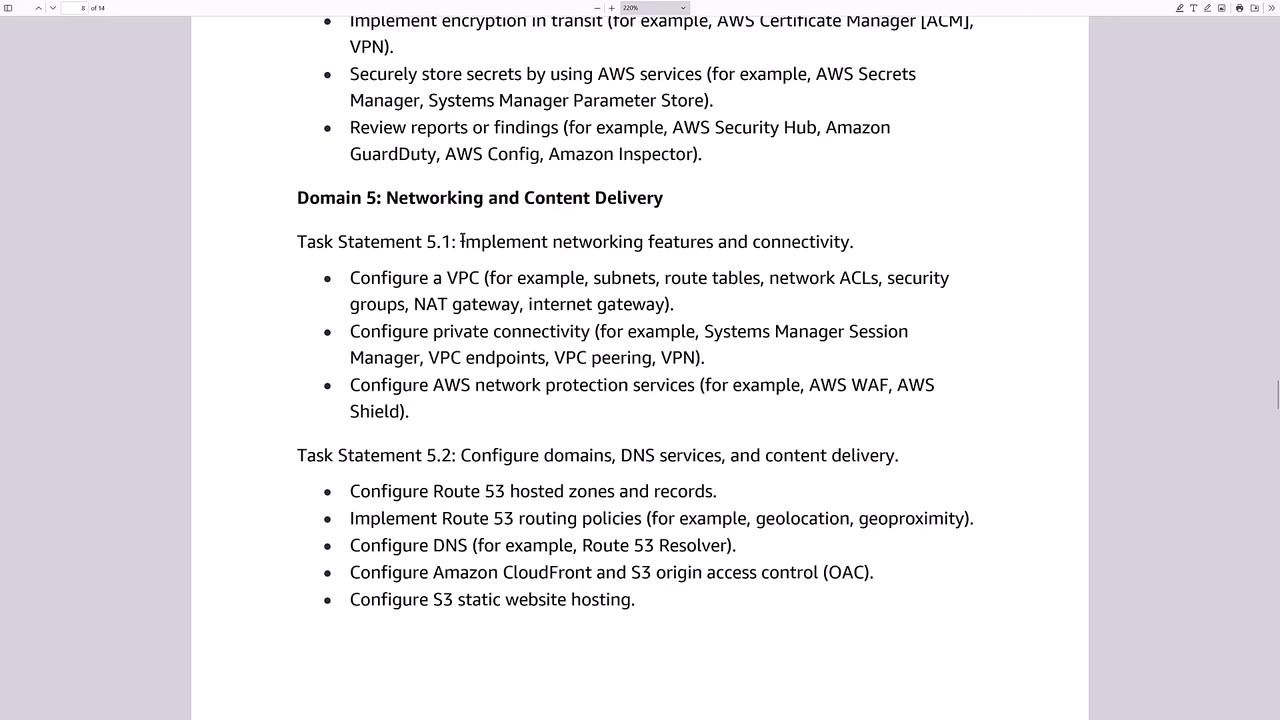
- Out-of-Scope Services: The guide also details services that are out of scope for this exam. For example, while CloudFront and Global Accelerator are within scope, services such as EMR, many business applications, and retired tools like CodeCommit are not covered. Note that ECS questions may appear less frequently, whereas EKS-related questions might be included. Similarly, topics such as Redshift, certain machine learning tools, and retired services like StoneMobile are not a focus.
Final Tips
Remember, this guide corresponds to the SOA-C02 exam version. You can find a link to the exam guide either at the bottom or to the right of this article. For any further questions or clarifications, please join our community forums.
Study Tip
If the exam details seem overwhelming at first, remember that consistent study and a step-by-step approach will help you build a strong understanding of each topic. Track your progress by marking off mastered topics, and allocate extra time to areas that need further review.
Good luck on your exam journey, and we look forward to seeing you in the next lesson!
Watch Video
Watch video content